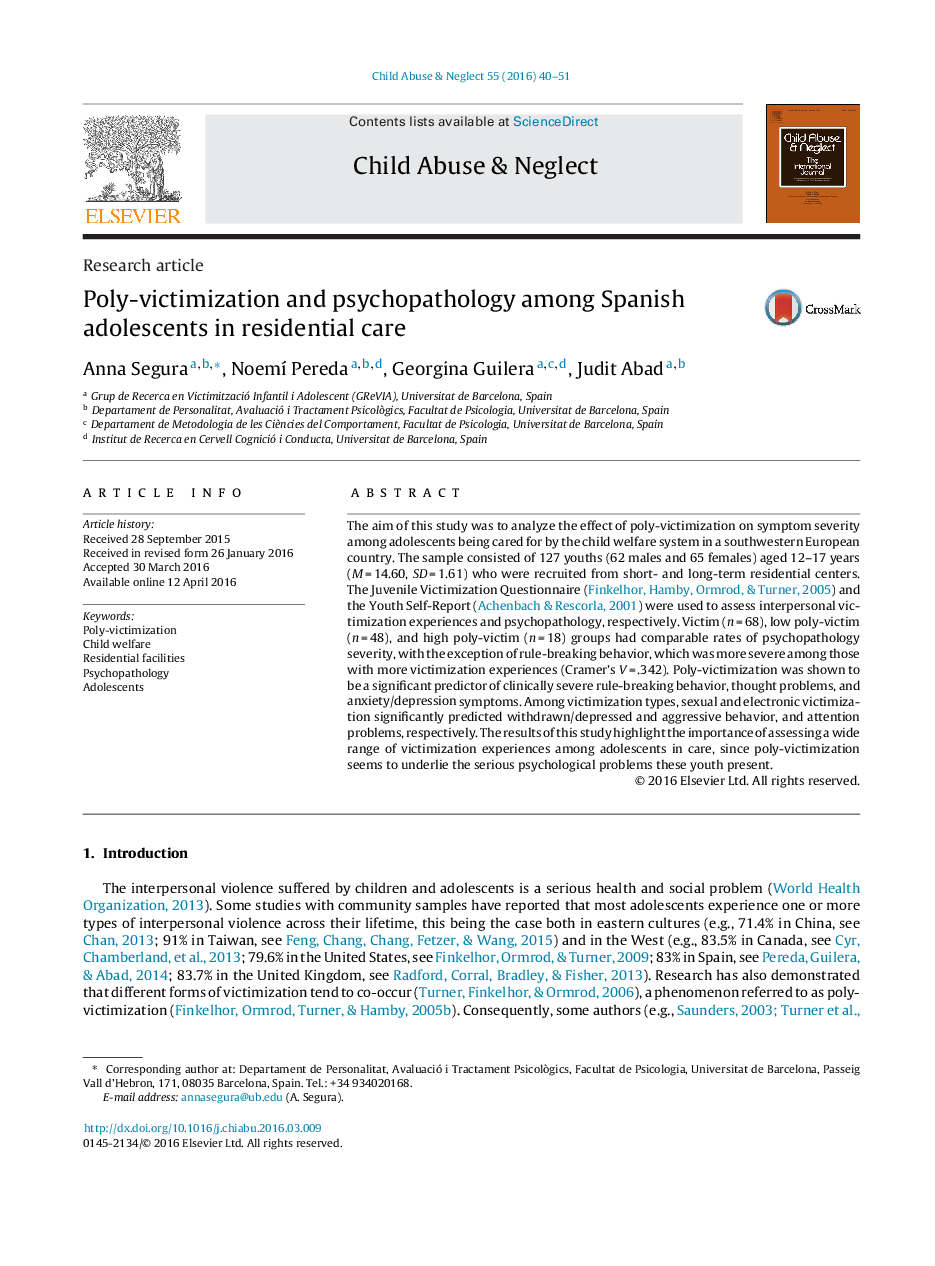| Article ID | Journal | Published Year | Pages | File Type |
|---|---|---|---|---|
| 6832313 | Child Abuse & Neglect | 2016 | 12 Pages |
Abstract
The aim of this study was to analyze the effect of poly-victimization on symptom severity among adolescents being cared for by the child welfare system in a southwestern European country. The sample consisted of 127 youths (62 males and 65 females) aged 12-17 years (M = 14.60, SD = 1.61) who were recruited from short- and long-term residential centers. The Juvenile Victimization Questionnaire (Finkelhor, Hamby, Ormrod, & Turner, 2005) and the Youth Self-Report (Achenbach & Rescorla, 2001) were used to assess interpersonal victimization experiences and psychopathology, respectively. Victim (n = 68), low poly-victim (n = 48), and high poly-victim (n = 18) groups had comparable rates of psychopathology severity, with the exception of rule-breaking behavior, which was more severe among those with more victimization experiences (Cramer's V = .342). Poly-victimization was shown to be a significant predictor of clinically severe rule-breaking behavior, thought problems, and anxiety/depression symptoms. Among victimization types, sexual and electronic victimization significantly predicted withdrawn/depressed and aggressive behavior, and attention problems, respectively. The results of this study highlight the importance of assessing a wide range of victimization experiences among adolescents in care, since poly-victimization seems to underlie the serious psychological problems these youth present.
Related Topics
Health Sciences
Medicine and Dentistry
Perinatology, Pediatrics and Child Health
Authors
Anna Segura, Noemà Pereda, Georgina Guilera, Judit Abad,
